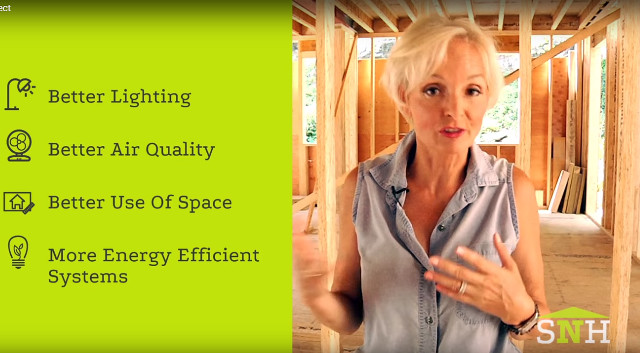That is the question that home builder Sabine H. Schoenberg tried to address in a short talk at CEDIA. Home automation is mainly a province of the custom install channel today – and targeted at affluent home owners. While the industry is still nascent, there is much that home automation can do – and it has its benefits. But are we at a tipping point for mainstream adoption?
Schoenberg, who is based in affluent Greenwich, Connecticut, began working with smart home technology back in 2005 when she was one of the first builders in Connecticut to install smart home wiring in a spec house she built. “My clients come from all around the world and represent all age groups and income levels,” says Schoenberg. “Most of them do not have smart home tech installed and are intrigued, but nervous about having it.”
Consumers are much more willing to make lifestyle upgrades and changes around the time they are buying a home. It may be adding bedrooms for a growing family, downsizing into retirement, or simply wanting an enhanced the home experience. “This willingness to make changes is key. It’s consumers in this transition that the industry needs to reach out to in order to drive adoption of smart home tech in a mainstream market,” added Schoenberg.
Schoenberg sees a couple of challenges that the industry still needs to overcome: emotional barriers and changing habits.
“People are afraid of something as simple as a smart thermostat. They fear losing control over their home,” remarked Schoenberg. “They feel that someone will start screwing with their heating and cooling systems in order to ‘save energy’.”
Schoenberg feels that consumers are looking more at new construction and away from ‘fixer uppers’ filled with DIY projects. She sees new construction as offering fewer headaches, less maintenance and greater comfort through smart temperature control, smart irrigation and other features. Consumers are shying away from long remodeling projects, she thinks.
The Shelton Group has conducted several surveys around healthy living and smart home technology. According to a recent survey 19% of women see smart home tech as their path to healthier and safer homes, which she sees a key factor that is likely to increase as smart home tech moves into the mainstream. That percentage seems rather low to drive adoption, however.
On the other hand, using smart tech to improve energy efficiency is seen as a clear benefit with almost half of female consumers believing smart home tech can help their homes be more energy efficient.
Millennials have a very different sense of time and expect to be able to access information and needs instantly. In contrast, she believes that baby boomers simply want to be able to pack as many life experiences into their retirement as possible.
Mobility also plays a big part according to Schoenberg. She points out that millennials and baby boomers alike want to be on the go with their jobs and with travel. Both groups have a desire to close the door to their home, yet still be connected with vital home systems and security.
Schoenberg also points out a desire to make maintenance easier thru smart home tech.

Further, she talks about how eco-minded and money-minded go hand in hand for all age groups. Millennials are known for their eco-minded and money-minded approach to life and baby boomers are seeking to stretch retirement savings across longer life spans.
Although millennials are often seen as the likely adopters of smart home tech, they still only account for 2.6% of the home buying market. Schoenberg notes that in order for smart home tech to go mainstream today, the industry needs to focus attention on baby boomers and gen x’ers who make up the remainder of the home buying market.
Finally, Schoenberg said that studies have repeatedly show that women are motivated by technologies that provide safety, result in savings, enhance health, and are environmentally friendly. “Stop telling women about the latest ‘cool’ gadgets and figure out how to connect with women’s desires and needs by focusing on health and safety for families, comfort, and energy efficiency.”
“When I present “The Greenwich House” I know men will head right to the utility room to check out all the gear. Women on the other hand want to be in the kitchen and family room where I often hand them my phone so they can control the thermostat, lighting, and more. They discover quickly that they can control and easily manage their domain, their home out of the palm of their hand.”
Analyst Comment
Personally, I can see how home automation can be very helpful for the disabled or for monitoring the elderly as part of an assisted living environment. But most of the automation offerings seem as though they are designed to allow us to do everything from the living room couch. In other words, the epitomy of laziness – which seems like the opposite to what most people are doing more of – exercise. I believe some of the energy saving features are real, but given the cost, what is the time frame for a return on investment? I bet it is quite long. I think proving real ROI may be the key to moving toward mainstream adoption. –CC

